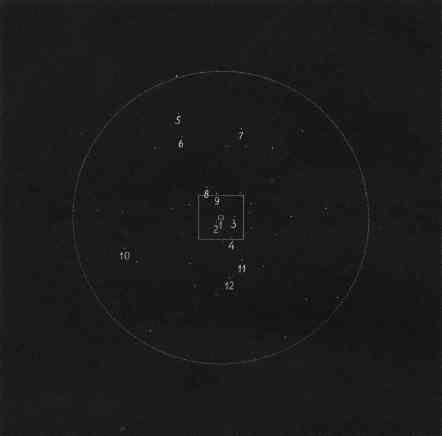| 19. |
Every time, the jump we make to our next point of observation gets more inconceivably
large. From the present one we could no longer see the sun with
the naked eye, for without the help of a telescope a star such as the sun is
barely visible at a distance of 55 light years, and our point of observation
would now be at a distance of 500 light years. It is not surprising that the sun
could no longer be seen with the naked eye from that distance, as its size at
the scale of this drawing would only be 0.00014 micron, or about the size of
an atom! Apart from the sun and Alpha Centauri, 36 stars are shown all of
which are known to be at less than 50 light years distance from the sun. They
are all where they would seem to be if we looked down on them on December
21st, 1951, at noon. A circle marks the distance of 50 light years from the sun.
|
1 cm. in picture = 1019 cm. = about 10 light-years. | Scale = 1:1019 |
|
